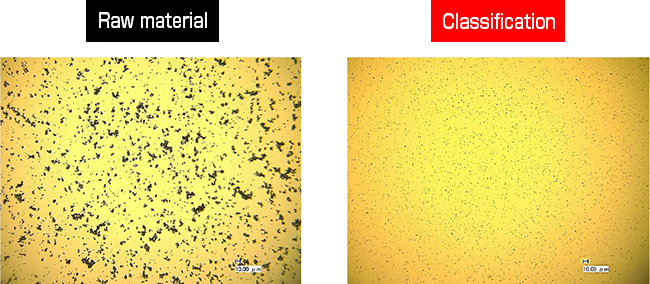Products & Services
List of products
Catalogs
Mixers
Small machines
Water treatment
Petrochemistry
Food & beverage
Medicines
Bio & regenerative medical techniques
Paints
Paper manufacturing
For experiments
Super-mix Series
Classifier
Bioreactors
Realization of Industrialization / Commercial Production / Scalability
Microbial culture
HSF ReactorAnimal cell culture
MRF ReactorAnimal cell culture
MRF-RB ReactorAnimal cell culture
VMF ReactorAnimal cell culture
VerSus ReactorRegenerative medicine
VMF-WSUB Reactor/TCSSingle-use BioReactor
iPS cell culture
HiD4×4Fittings/Options
Solutions
Development of exclusive mixers・
and impellers by purpose of useContracted numerical calculation
Evaluation of contracted cell culture
Classification performance evaluation
Environmental testing equipment
Classification
performance evaluation
We have a wet classifier for sample classification evaluations in our mixing technology laboratory, and we conduct in-house R&D and classification performance evaluations of samples according to customer requests.
What you can do with a classification performance evaluation
We will conduct a classification test on the sample you provide and report the results. Note that, depending on the sample, it may be impossible to classify with our current machine specifications.
First of all, we ask you to fill in the questionnaire sheet for the classification test and contact us by email.
We will make a trial calculation on the "feasibility of your requested classification" and contact you.
- Flow of classification evaluation test(Click to open details)
-
Customer request
Please fill in your request on the questionnaire sheet.

Please contact us
E-Mail :
Please send us an email and attach the questionnaire sheet.
Click here for the questionnaire sheet

We will confirm and inform you of the feasibility of classification
If classification is not possible
We will contact you to that effect.
Please note that we are continually developing our products to improve performance. We will contact you again if it becomes possible to satisfy your request.
If classification may be possible
We will inform you of the fact that classification may be possible and of the "required sample quantity" for the classification evaluation.

Conclusion of a non-disclosure agreement
If necessary, it is also possible to conduct a classification assessment of samples after signing a confidentiality agreement.

Meeting
We will check the details of your requested classification, the test cost, and the schedule, etc.

Quotation/Schedule confirmation
After deciding the form of the contract we will send you a quotation and schedule.

Contract establishment
If there is no problem with the contents of the contract, the contract will be established after your written submission. After that, we will carry out the classification test in accordance with our schedule.

Classification test implementation

Classification performance report
After the classification test, we will inform you of the results.

Actual machine examination/Additional tests, etc.
Based on the results of the test, consultation on actual machine examination and additional tests etc. is also available.
This describes the general scheme. We will decide how to proceed together with you on a case-by-case basis.
Classification process example
①Silica fine particles (ρ: 2200 kg/m3) - Fine particle and coarse particle remove process using aqueous dispersion
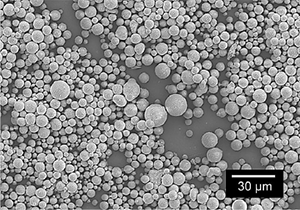
[Aims]
1.5 μm or less removal and
4.5 μm or more removal
(1) Silica fine particles (density: 2200 kg/m3) - Aqueous dispersion Fine particle remove process
Fine particles adhering to the surface of the raw material are completely removed by the fine particle remove process.
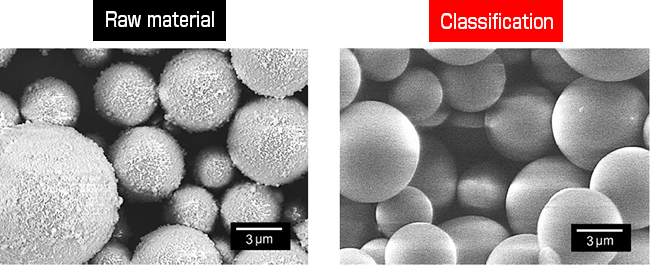
(2) Silica fine particles (density: 2200 kg/m3) - Aqueous dispersion Coarse particle remove process
The coarse particle remove process after the fine particle remove process gives particles with high monodispersity.
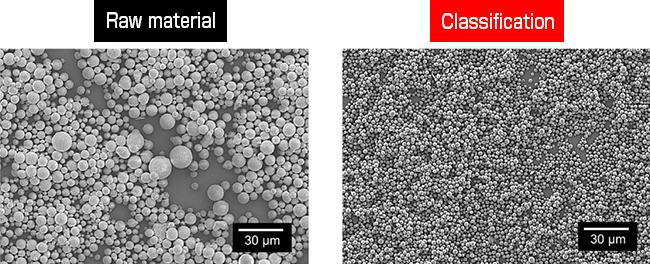
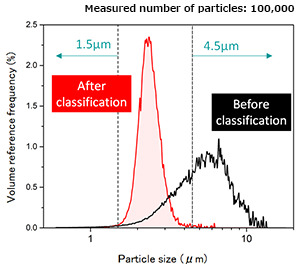
Silica fine particles (ρ: 2200 kg/m3) - Aqueous dispersion Particle size distribution
② Acrylic fine particles (1200 kg/m3) - Aqueous dispersion Coarse particle remove process
The particle size distribution can be freely controlled by the rotor peripheral speed.
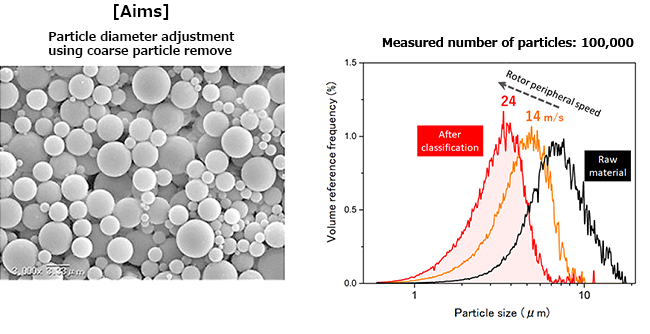
③ Barium titanate (6000 kg/m3) - Aqueous dispersion Coarse particle remove process
The coarse particle cut removes the coarse particles and the distribution has a mode diameter of about 0.6 μm.
